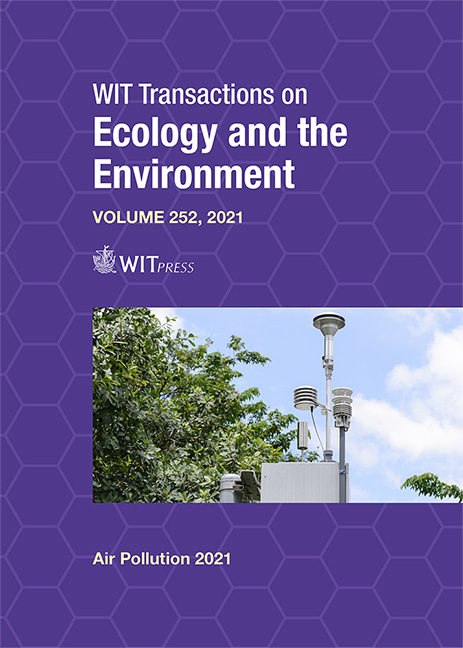VARIABILITY OF EMISSION RATE DEFINITION IN REGULATORY ODOUR DISPERSION MODELLING FROM CIVIL WASTEWATER TREATMENT PLANTS
Price
Free (open access)
Transaction
Volume
252
Pages
10
Page Range
115 - 124
Published
2021
Paper DOI
10.2495/AIR210111
Copyright
Author(s)
MARCO RAVINA, SALVATORE BRUZZESE, DEBORAH PANEPINTO, MARIACHIARA ZANETTI
Abstract
The analysis of odour impacts in civil wastewater treatment plants (WWTPs) is a challenging task. Odour regulations still present a lack of standardization, that bring inherent levels of uncertainty to the analysis procedure. Dispersion models can provide support towards the characterization and reduction of odour nuisances. The application of dispersion models requires an adapt setting and a detailed characterization of the emission sources, in terms of emission rate. In this study odour dispersion of a large WWTP in northern Italy was considered. Simulations were carried out with the CALPUFF model. The study focused on the selection of the open field correction method for wind velocity used in the calculation of odour emission rates (OERs). Three different relationships were considered: the power law, the logarithmic law and the Deaves–Harris (D–H) law. The area underlying the 1 OU/m3, 3 OU/m3, and 5 OU/m3 concentration isopleths was considered as indicator. The results showed that OERs and impact area varied depending on the selected method. Taking the power law as the reference, the average variability of the impact area was between –33% and –48% if the logarithmic law was applied, and –83% and –94% if the D–H law was applied. The present study provides knowledge towards a better alignment of the concept of the odour impact criteria.
Keywords
odour impact assessment, odour emission rate, dispersion modelling, wastewater treatment, odour impact criteria





